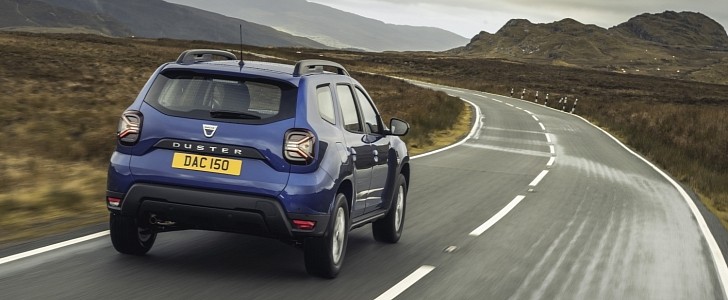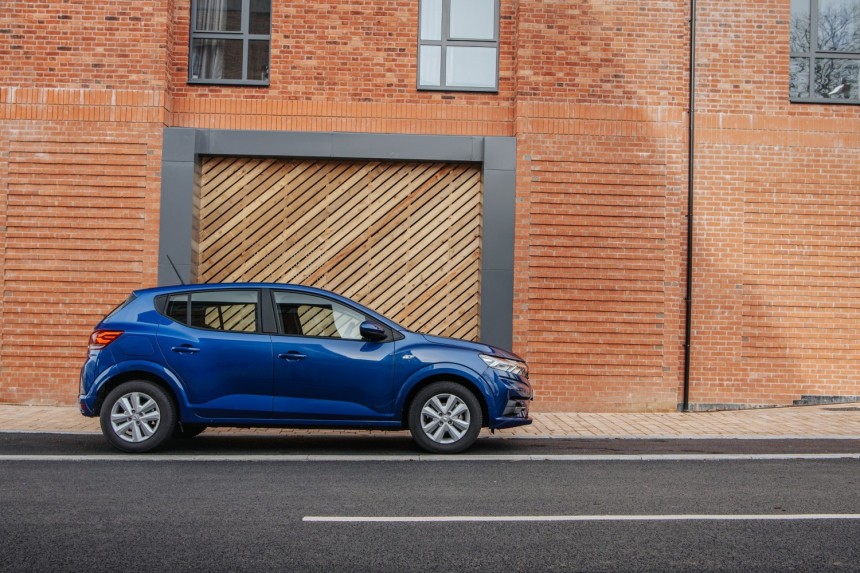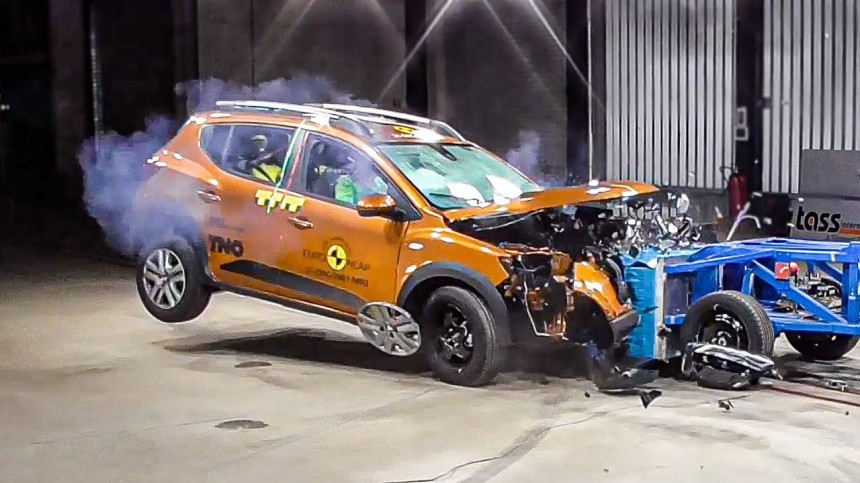Sometimes, it feels like U.S. automakers would rather go bankrupt than admit they either have no idea what their consumers want in a car, or just don’t care. Their near blanket refusal to build a small, affordable, and reliable family car that Americans actually want to buy over the years has allowed international competition to swoop in and take most of their market share.
There’s one automaker based in Romania that’s hardly acknowledged by the auto industry in North America. Even so, their cheap but cheerful vehicles could be a smash hit among student debt riddled younger Americans, desperate for four wheels and an engine of any kind. There’s just one “minor” issue with that sentiment, we’re afraid.
First thing’s first, who the heck is Dacia? Well, it has some ties with the Industria Aeronautica Romana (IAR for short). An aerospace company with deep roots making aircraft during some of the most tumultuous periods in Romanian history. Their most famous creation was the IAR-80, a piston-engined fighter plane more or less equal in performance to other famous Axis fighters like the German Bf-109 and Japanese A6M Zero.
Dacia was formed as an automaker in 1966 in the same place where the IAR stood during the war. The company even saw Romanian President and certified member of the nut-job dictator club Nicolae Ceauescu drive the first Dacia 1100 off the production room floor in 1968. That car was based on the French Renault 8 and 10, and most early Dacias have their origins with the French automaker.
Soon Dacia began making their own bespoke in-house designs, and even exporting them to foreign markets like Poland and Russia. Today, they’re known in the west primarily for their Sandero. A car which Top Gear/Grand Tour presenter and card-carrying goofball James May enjoys very much. Until Hammond and May ran a semi-truck into it, on purpose.
Captain Slow iconically doted over the Sandero for its relative reliability and bargain-basement price. As well as all the quirks that come along with what being a bare-bones car can bring. If Mr. May can bring himself to fall head over heels in love with simple, cheap Dacias, who’s to say the folks who watch him on Amazon Prime in America wouldn’t enjoy it too?
You might think there’s some real potential here for Dacias to perform strongly over in the states. That is until we get to their one glaring, catastrophic problem they’d face. They’re about as safe in a crash as a bicycle. Perhaps that’d be too kind to bicycles.
During Dacia’s time under the umbrella of the disastrous Renault-Nissan-Mitsubishi Alliance, the company largely sat on the sidelines as the larger brands in the group self-destructed at the hands of current international criminal Carlos Ghosn. The implications of that mess will play out for years to come.
In this period, Dacia’s dedicated Romanian workers valiantly did the best they could with what they had, but the quality of the build of Dacia cars seems to have declined significantly. Because the results in a crash test are shocking, to say the least.
Whether it be a side impact, a head-on collision, or even a fender bender, the Dacia Sandero especially, but also the Duster crossover SUV, have scored barely acceptable marks (two stars) nearly across the board in Euro NCAP tests. Sure, that includes an extremely poor rating when it comes to vulnerable road users and safety assist, but still.
Recent changes to EuroNCAP safety ratings have made it even harder for new cars to achieve the maximum rating. A move which has seen past Dacia models fail to reach the acceptable safety standards it had seen before. Implimentations ilke advanced ADAS (driver assistance systems) as well as pedestrian protection systems up to the new standard prevents cheap Dacias from achieving higher scores.
Suppose either car were to undergo the stringent safety testing we’ve come to expect from the American Insurance Institute for Highway Safety (IIHS). In that case, they’d likely score “poor” in every category imaginable.
This would likely eliminate the chance of Dacias ever being sold in the states without completely redesigning them from square one. Thus, in a move that further deprives young Americans of cheap wheels, Dacia will likely remain a niche Central/Eastern European manufacturer for the foreseeable future. Meanwhile, Chrysler will likely to continue to not make a small, cheap car worth buying. Pitty.
First thing’s first, who the heck is Dacia? Well, it has some ties with the Industria Aeronautica Romana (IAR for short). An aerospace company with deep roots making aircraft during some of the most tumultuous periods in Romanian history. Their most famous creation was the IAR-80, a piston-engined fighter plane more or less equal in performance to other famous Axis fighters like the German Bf-109 and Japanese A6M Zero.
Dacia was formed as an automaker in 1966 in the same place where the IAR stood during the war. The company even saw Romanian President and certified member of the nut-job dictator club Nicolae Ceauescu drive the first Dacia 1100 off the production room floor in 1968. That car was based on the French Renault 8 and 10, and most early Dacias have their origins with the French automaker.
Soon Dacia began making their own bespoke in-house designs, and even exporting them to foreign markets like Poland and Russia. Today, they’re known in the west primarily for their Sandero. A car which Top Gear/Grand Tour presenter and card-carrying goofball James May enjoys very much. Until Hammond and May ran a semi-truck into it, on purpose.
You might think there’s some real potential here for Dacias to perform strongly over in the states. That is until we get to their one glaring, catastrophic problem they’d face. They’re about as safe in a crash as a bicycle. Perhaps that’d be too kind to bicycles.
During Dacia’s time under the umbrella of the disastrous Renault-Nissan-Mitsubishi Alliance, the company largely sat on the sidelines as the larger brands in the group self-destructed at the hands of current international criminal Carlos Ghosn. The implications of that mess will play out for years to come.
In this period, Dacia’s dedicated Romanian workers valiantly did the best they could with what they had, but the quality of the build of Dacia cars seems to have declined significantly. Because the results in a crash test are shocking, to say the least.
Recent changes to EuroNCAP safety ratings have made it even harder for new cars to achieve the maximum rating. A move which has seen past Dacia models fail to reach the acceptable safety standards it had seen before. Implimentations ilke advanced ADAS (driver assistance systems) as well as pedestrian protection systems up to the new standard prevents cheap Dacias from achieving higher scores.
Suppose either car were to undergo the stringent safety testing we’ve come to expect from the American Insurance Institute for Highway Safety (IIHS). In that case, they’d likely score “poor” in every category imaginable.
This would likely eliminate the chance of Dacias ever being sold in the states without completely redesigning them from square one. Thus, in a move that further deprives young Americans of cheap wheels, Dacia will likely remain a niche Central/Eastern European manufacturer for the foreseeable future. Meanwhile, Chrysler will likely to continue to not make a small, cheap car worth buying. Pitty.


















